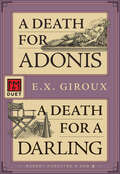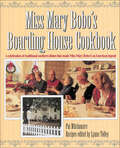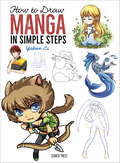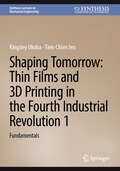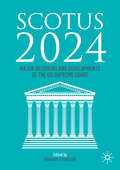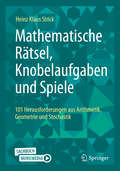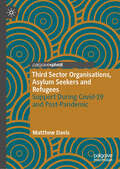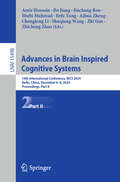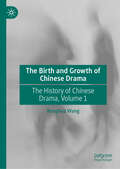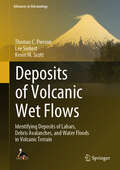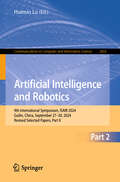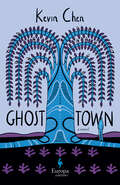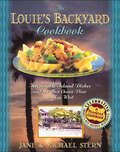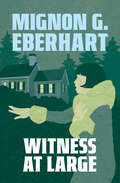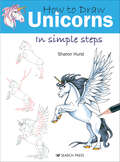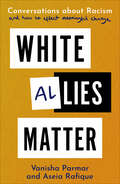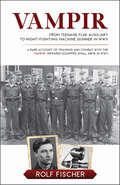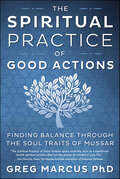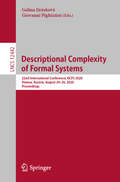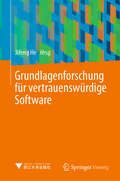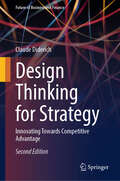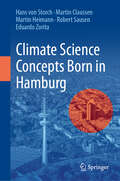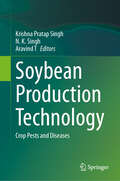- Table View
- List View
A Death for Adonis • A Death for a Darling: An F&M Duet (Robert Forsyth)
by E.X. GirouxWith A Death for Adonis and A Death for a Darling we are delighted to introduce the Robert Forsythe series, which was written primarily in the 1980s but carries all the flavors (er, flavours) that fans of British Golden Age mystery have come to expect. Forsythe himself—a brilliant young barrister forced to give up the law in response to a dreadful and undisclosed disgrace—is very much in the Wimsey mold, which is to say that solving crimes is his personal passion but by no means his bread and butter. And though Forsythe lacks a Lugg-like manservant, he does have an indispensable and devoted secretary who shares the spotlight as the series develops. Both Adonis and Darling nod very distinctly in the direction of the classic murder mystery novel: Darling, in fact, is set during a country-house weekend! And for all that Giroux (pseudonym of Canadian writer Doris Shannon) was clearly steeped in the genre, the Forsythe series is no museum piece, managing the neat trick of being both charmingly vivid and delightfully well bred.
Miss Mary Bobo's Boarding House Cookbook: A Celebration of Traditional Southern Dishes that Made Miss Mary Bobo's an American Legend
by Pat MitchamoreDive into the history of Miss Mary Bobo&’s Boarding House and enjoy a celebration of traditional southern recipes with her delectable dishes that made her an American legend. Shortly before noon, about sixty guests gather on the front porch and lawn of Miss Mary Bobo's Boarding House in Lynchburg, Tennessee for a mid-day dinner. Each table is cared for by a Lynchburg hostess, a lady from the town who sees to it that the bowls and platters are kept full, that everyone meets each other at the table, that the conversation is always flowing, and that everyone has a grand time. The dinner bell is rung and as each name is called, diners follow their hostess to the dining table.Now you can give your guests the same delicious southern dishes served at Miss Mary Bobo's Boarding House. None are difficult to cook, but all are best when prepared by caring hands and served with friendship, a recipe that all boarding houses have found to be foolproof! In Miss Mary Bobo&’s Boarding House Cookbook, you&’ll discover delicious dishes including…Unforgettable Ham Balls, Miz Bobo&’s Cabbage Relish, Miss Mary&’s Famous Chicken and Pastry, Moore County Mushroom Soup and more Miss Mary Bobo&’s Boarding House Cookbook is the perfect collection of recipes to entertain guests, bring family and friends together, and of course, enjoy some good old-fashioned Southern cooking.
How to Draw: Manga
by Yishan LiIf you have always wanted to draw manga but weren’t sure how to begin, this fun and simple step-by-step book will help kick-start your comic-drawing journey. Learn how to draw boys, girls and creatures (ordinary and extraordinary) in the manga style. Starting with basic shapes, professional manga artist Yishan Li shows how easy it is to turn circles, rectangles, squares and ovals into teens, kids, witches, wizards, monsters, animals and much more. Professional manga art from well-known comic creator Yishan Li Over 130 step-by-step drawings Easy method with great results
Shaping Tomorrow: Fundamentals (Synthesis Lectures on Mechanical Engineering)
by Tien-Chien Jen Kingsley UkobaThis two-volume work explores the convergence of thin films and 3D printing within the Fourth Industrial Revolution (4IR), targeting engineers, researchers, students, and professionals. The book begins by elucidating Industry 4.0 and its pivotal drivers, emphasizing the integration of advanced digital technologies, automation, and data-driven insights. Subsequent chapters look into the history, properties, and emerging trends of thin films, showcasing their diverse applications in flexible electronics, green hydrogen production, battery technologies, solar technology, and high-performance displays and lighting. Additionally, it explores the transformative role of 3D printing across industries, from aerospace and automotive to healthcare and consumer goods. The work meticulously addresses challenges and opportunities in adopting these technologies, advocating for collaboration, innovation, and continuous improvement. Lastly, it underscores the integration of thin films and 3D printing, highlighting their synergistic potential in driving innovation, customization, and sustainability in manufacturing and beyond. The work serves as an insightful guide, offering valuable perspectives and insights into the applications and relevance of thin films and 3D printing in the 4IR landscape. This first volume deals with fundamental aspects.
SCOTUS 2024: Major Decisions and Developments of the US Supreme Court
by Howard SchweberEach year, the Supreme Court of the United States announces new rulings with deep consequences for our lives. This seventh volume in Palgrave’s SCOTUS Decisions series explains and contextualizes the landmark cases of the US Supreme Court in the term ending 2024. With a close look at cases involving key issues and debates in American politics and society, SCOTUS 2024 tackles the Court's rulings on ballot access, executive immunity, access to mifepristone, funding of the Consumer Financial Protection Bureau, the Equal Protection clause and state redistricting, the Securities and Exchange Commission's ability to levy civil penalties, the power of federal agencies to interpret the laws they administer, the the Environmental Protection Agency's ability to reduce air pollution from power plants, and more. Written by notable scholars in political science and law, the chapters in SCOTUS 2024 present the details of each ruling, its meaning for constitutional debate, and its impact on public policy or partisan politics. Finally, SCOTUS 2024 analyzes ethics scandals on the Court and charts its shifts in ideology.
Mathematische Rätsel, Knobelaufgaben und Spiele: 101 Herausforderungen aus Arithmetik, Geometrie und Stochastik
by Heinz Klaus StrickDieses Buch richtet sich an alle, die Freude haben am Lösen mathematischer Probleme und die etwas Geduld und Ausdauer dafür mitbringen. Es ist sehr vielseitig einsetzbar – in der Freizeit, im Schulunterricht, im Rahmen der Begabtenförderung und in AGs. Die überwiegend mehrschrittigen Aufgaben können unabhängig voneinander bearbeitet werden. Die bunte Mischung macht Lust darauf, einfach „loszulegen“: Zugänge finden, Ideen entwickeln und Lösungsansätze ausprobieren. Konkret geht es beispielsweise um Fragen wie: Wie können LEGO-Mauern stabil gebaut werden? Welche falsch gekürzten Brüche sind trotzdem richtig? Wieso können quadratische Gleichungen auch mehr als zwei Lösungen haben? Wie passen regelmäßige Vielecke ineinander? Wie findet man faire Regeln für Würfelspiele? Die Aufgaben im ersten Teil sind mit elementaren mathematischen Methoden lösbar, also bereits für Grundschule und Unterstufe geeignet. Für die Probleme des zweiten Teils werden Kenntnisse der Mittelstufe vorausgesetzt, für die des dritten Teils teilweise auch Methoden, die erst in der Oberstufe vermittelt werden. An manchen Fragestellungen des vierten Teils dürften selbst erfahrene Mathematiker zu knobeln haben. Daher werden ausführliche Lösungen sowie Hinweise auf alternative Lösungswege bereitgestellt – sie machen etwa drei Viertel des Buchumfangs aus. Für einige Aufgaben sind außerdem Kopiervorlagen online abrufbar.
Third Sector Organisations, Asylum Seekers and Refugees: Support During Covid-19 and Post-Pandemic
by Matthew DavisThis short Pivot explores the the physical, emotional, and psychological impact of the lived experiences of asylum seekers on the staff and volunteers of third sector organisations who assist and support them. This research casts a direct light on the issues, challenges, and barriers of their work during and after the pandemic. It seeks to pinpoint the needs of staff which should be addressed by employers of third sector organisations to improve efficiency and wellbeing from an operational viewpoint, a mental health lens and psychological perspective. It adopts a Constructivist Grounded Theory (CGT) — a qualitative research method that involves co-constructing theories with participants. The research effectively examines how frontline organisations need to change given the social, economic and political challenges faced by asylum seekers and refugees in accessing support alongside the impact of new Government immigration, asylum policies and new legislation at that time. It also provides insights into the lived experiences of asylum seekers and refugees.
Advances in Brain Inspired Cognitive Systems: 14th International Conference, BICS 2024, Hefei, China, December 6–8, 2024, Proceedings, Part II (Lecture Notes in Computer Science #15498)
by Amir Hussain Bo Jiang Jinchang Ren Chenglong Li Mufti Mahmud Erfu Yang Aihua Zheng Shuqiang Wang Zhi Gao Zhicheng ZhaoThe two-volume set LNAI 15497 and LNAI 15498 constitutes the refereed proceedings of the 14th International Conference on Brain Inspired Cognitive Systems, BICS 2024, held in Hefei, China, during December 6–8, 2024. The 56 full papers presented in these two volumes were carefully reviewed and selected from 124 submissions. These papers deal with various aspects of brain inspired cognitive systems, focusing on latest advancements in brain-inspired computing; artificial intelligence; and cognitive systems.
The Birth and Growth of Chinese Drama: The History of Chinese Drama, Volume 1
by Ronghua WangThis is a book of the history of China’s contemporary drama. It provides a panorama of the ups and downs of Chinese drama. It tells how this western art has been adapted to the Chinese context and what it has offered to the world of theatre. It illustrates who the outstanding playwrights are and what great drama they have produced. The book shows how Chinese traditional culture has been blended with this western art form. The book also demonstrates how deeply drama is involve in Chinese politics and daily life.
Deposits of Volcanic Wet Flows: Identifying Deposits of Lahars, Debris Avalanches, and Water Floods in Volcanic Terrain (Advances in Volcanology)
by Thomas C. Pierson Lee Siebert Kevin M. ScottThis book strives to fill in the following gaps. First, there is no comprehensive descriptive treatment of deposits emplaced by lahars, debris avalanches, and muddy floods at volcanoes. Second, until now there has not been a comprehensive effort to describe and differentiate the full range of fragmental deposits on volcanoes—the initially wet volcaniclastic mass-flow and fluid-flow deposits usually studied by geomorphologists and sedimentologists, the initially dry pyroclastic mass-flow, fluid-flow, and tephra-fall deposits studied by volcanologists, and the deposits transported and deformed by flowing glacier ice that are studied by glacial geologists. All these deposits are mainly composed of volcaniclastic particles, are deposited on the flanks of volcanoes, all these deposits are mainly composed of volcanic particles and can closely resemble one another. Third, all these processes have vastly different hazard implications, so a means for reliable identification of past processes from deposits is critical for hazard assessment.
Artificial Intelligence and Robotics: 9th International Symposium, ISAIR 2024, Guilin, China, September 27–30, 2024, Revised Selected Papers, Part II (Communications in Computer and Information Science #2403)
by Huimin LuThis book constitutes the refereed proceedings of the 9th International Symposium Conference on Artificial Intelligence and Robotics, ISAIR 2024, in Guilin, China, in September 27–30, 2024. The 61 full papers presented were carefully reviewed and selected from a total of 164 submissions. The ISAIR 2024 focuses on three important areas of pattern recognition: artificial intelligence, robotics and Internet of Things, covering various technical aspects.
Ghost Town: A Novel
by Kevin ChenA NEW YORK TIMES MOST ANTICIPATED BOOK OF FALL 2022 FROM THE BEST-SELLING AUTHOR & WINNER OF THE TAIWAN LITERATURE AWARD Keith Chen, the second son of a traditional Taiwanese family of seven, runs away from the oppression of his village to Berlin in the hope of finding acceptance as a young gay man. The novel begins a decade later, when Chen has just been released from prison for killing his boyfriend. He is about to return to his family’s village, a poor and desolate place. With his parents gone, his sisters married, mad, or dead, there is nothing left for him there. As the story unfurls, we learn what tore this family apart and, more importantly, the truth behind the murder of Chen’s boyfriend. Told in a myriad of voices, both living and dead, and moving through time with deceptive ease, Ghost Town weaves a mesmerizing web of family secrets and countryside superstitions, the search for identity and clash of cultures. ? “Multidimensional characters, a beautifully realized setting, and an apposite surprise ending... This book is excellent.”—Booklist (Starred Review)
The Louie's Backyard Cookbook: Irrisistible Island Dishes and the Best Ocean View in Key West (Roadfood Cookbooks)
by Jane Stern Michael SternMixing elegance with an island attitude, Louie's Backyard is an award-winning Key West, Florida restaurant famous for its fine food and relaxed oceanfront ambience, and what marks the food at Louie's backyard is innovation.Chef Doug Shook likes to create new variations daily. "Inventing is the joy of cooking," he says, which means the recipes in The Louie's Backyard Cookbook are the best of many recipes Shook has created over the years. They are for people who enjoy the entire process of creating a meal, from procuring the ingredients to making a handsome presentation of a finished dish.In this cookbook, you&’ll discover delicious dishes such as:Conch Fritters,Key Lime Pie,Jerk-Rubbed Free-Range Chicken Breast,Sauteed Key West Shrimp with Bacon and Stone-Ground Grits,Conch Chowder, and more!The Louie's Backyard Cookbook contains not only 150 of Chef Shook's most creative recipes, but takes you behind the scenes through photos and stories to learn about the restaurant and the Key West culture that lures people with its beauty and keeps them with its liberty.This cookbook is the next best thing to experiencing the islands themselves!
Witness At Large
by Mignon G. EberhartA woman is witness to an act that could cause the man she loves to face trial for murder in this mystery thriller from an Edgar Award–winning author.She was known on the island as Sister and she always tried to do the right thing. But when she comes upon Tom, the man she secretly loves, pulling a woman’s body from the water, a hammer in his hand, Sister doesn’t know what to think. She doesn’t believe Tom is capable of killing. She can’t believe it. Before going to the police with what Sister saw, Tom proposes. If they marry, she won’t have to testify against him. How far will Sister go to protect the man she loves? And if Tom isn’t the murderer, the killer must still walk among the small island community—which means they could strike again . . .Praise for Mignon Eberhart“Eberhart is one of the great ladies of twentieth-century mystery fiction.” —John Jakes, author of the North and South Trilogy“One of America’s favorite writers.” —Mary Higgins Clark
How to Draw: Unicorns
by Sharon HurstUnicorns have captured the imagination of people all over the world. These fantastical creatures have never been so popular, and well-known fantasy artist Sharon Hurst shows you how to bring them to life in this, her first book. Containing 26 different unicorns to draw in a range of poses and styles, each one is achieved in just 7 simple steps, making this book suitable for all ages and abilities. Each one starts with a few basic shapes and is developed into a finished tonal drawing, and a final coloured version shows you how to take your drawing even further. Choose from majestic winged creatures or playful young unicorns and discover how easily you too can create these amazing fantasy animals.
Classic Tarot Spreads
by Sandor KonraadClassic Tarot Spreads presents one of the most comprehensive collections of card spreads available in one book. It includes 22 classic spreads that provide a key to the history, mythology and metaphysical meanings of the cards. The book not only covers the practice and ritual of card reading, it treats the Tarot deck as a magical tool and counseling medium that can be used to resolve basic life issues. Sandor Konraad includes spreads for opening a reading - answering questions about health, love, marriage and money - as well as spreads for ending a reading.
White Allies Matter: Conversations about Racism and How to Effect Meaningful Change
by Vanisha Parmar Aseia RafiqueWhy do organizations and individuals in the UK and other countries still deny the realities of structural racism and unconscious bias?And when there is an acknowledgement of the problem, why are long-term solutions constantly avoided?Drawing on their personal backgrounds, professional experience and extensive research, Vanisha Parmar and Aseia Rafique expose the hypocrisy around racism in our organizations and society at large. White Allies Matter is a passionate and practical guide for starting conversations about racism and setting the groundwork for meaningful change.
Vampir: From Teenage Flak Auxiliary to Night-Fighting Machine Gunner in WWII
by Rolf FischerThe memoirs of Rolf Fischer, a night-fighting machine gunner in World War II. Rolf Fischer was born near Bremen, Germany in 1927. At age 15, he and his classmates were called up to serve as auxiliaries at the local antiaircraft defense battery. Here, Rolf and his friends experienced Allied bombing raids, death, and killing. Along with the young auxiliaries, the flak battery comprised wounded front veterans and Soviet prisoners of war, referred to as “Hiwis.”In this book, Rolf describes in great detail how all three groups interacted and learned to work together. At age 17 Rolf is called up to the regular army and is sent to basic training with the 65th Regiment, 22 Luftlande Infanterie Division, at Delmenhorst. From there, he is sent to a specialized machine gun–training facility in Denmark. Here Rolf and other handpicked recruits are taught to use MG 42s equipped with infrared optics. This early night-fighting gear was sometimes referred to by the Germans as “Vampir” (Vampire). Rolf provides an in-depth description of the equipment and its usage. Upon completion of the course, Rolf (now a corporal) and his squad are deployed on the Western Front, where they operate as an independent fire team, moving from unit to unit along the front. Rolf describes brutal combat in the Hürtgen Forest, supporting German paratroopers (Fallschirmjäger) in a desperate counterattack, and defending a position against dangerous US Army Rangers. He goes on to describe his surrender and captivity in a British POW camp. This is not a dry compilation of dates and figures; rather, it is an intense personal account of combat and comradeship in the deadly final acts of the Second World War. Rolf Fischer's narrative is constructed mostly through dialogue, providing an unusually immersive, cinematic feel to this exceptional memoir.
Spiritual Practice of Good Actions: Finding Balance Through the Soul Traits of Mussar
by Greg MarcusBring your everyday life into alignment with your aspirational values through Mussar, a thousand-year-old Jewish practice of spiritual growth based on mindful living. Perfect for anyone, regardless of age or experience, this comprehensive book presents thirteen soul traits—ranging from humility and gratitude to trust and honor—and the simple daily actions you can take to develop them.Drawing on universal principles and providing grounded instruction, The Spiritual Practice of Good Actions helps you explore soul traits through daily techniques and exercises, including mantras, mindful observation, and journaling. Nurture your spirit with inspiring stories and build a soul trait profile to better understand yourself. By dedicating two weeks of practice to each trait, you'll see major changes in how you approach the world and feel empowered to be your best self.Praise:"The Spiritual Practice of Good Actions opens wide the doors to a traditional Jewish spiritual practice that has the power to transform your life."—Alan Morinis, Dean, The Mussar Institute and author of Everyday Holiness"Weaving ancient wisdom with twenty-first-century circumstances, Greg Marcus beautifully presents how the teachings of Mussar can bring you a deeper sense of purpose and a better life."—Tiffany Shlain, Emmy-nominated filmmaker and creator of The Making of a Mensch
Descriptional Complexity of Formal Systems: 22nd International Conference, DCFS 2020, Vienna, Austria, August 24–26, 2020, Proceedings (Lecture Notes in Computer Science #12442)
by Giovanni Pighizzini Galina JiráskováThis book constitutes the proceedings of the 22nd International Conference on Descriptional Complexity of Format Systems, DCFS 2020, which was supposed to take place in Vienna, Austria, in August 2020, but the conference was canceled due to the COVID-19 crisis.The 19 full papers presented in this volume were carefully reviewed and selected from 31 submissions. They deal with all aspects of descriptional complexity and costs of description of objects in various computational models, such as Turing machines, pushdown automata, finite automata, grammars, and others.
Grundlagenforschung für vertrauenswürdige Software
by Jifeng HeIn diesem Buch werden vor allem der Forschungsüberblick, die Forschungsergebnisse und die weiteren Aussichten von "The Fundamental Research for Trustworthy Software", einem großen Forschungsprojekt des NSFC, vorgestellt. Das Projekt konzentriert sich auf vier wissenschaftliche Kernthemen: Messung und Modellierung der Software-Glaubwürdigkeit, Konstruktion und Verifizierung vertrauenswürdiger Software, Entwicklung und Kontrolle vertrauenswürdiger Software sowie Konstruktion und Bewertung einer vertrauenswürdigen Umgebung. Es konzentriert sich auf die Glaubwürdigkeit von embedded Software und Netzwerkanwendungssoftware und nimmt die Glaubwürdigkeit von Software in nationalen Schlüsselanwendungsbereichen als einen Durchbruch, um einen Forschungsrahmen für die Grundlagenforschung von vertrauenswürdiger Software zu schaffen.
Design Thinking for Strategy: Innovating Towards Competitive Advantage (Future of Business and Finance)
by Claude DiderichThe business environment is changing more rapidly than ever before, and new business ideas are emerging. This book discusses applying insights from design thinking and the jobs-to-be-done framework to craft novel strategies that satisfy customer needs, make use of available capabilities, integrate requirements for financial success, and provide a competitive advantage. It guides readers through the jungle encountered when developing a strategy for sustained growth and profitability. It addresses strategy design holistically by applying abductive reasoning, iteratively observing customers, focusing on empathy and prototyping ideas, and validating them by actual customers. This second edition extends the original design thinking for the strategy process by adding a robust framework for strategic decision-making based on customer value creation and firm value appropriation rooted in the jobs-to-be-done theory. It particularly focuses on how market structures, including peer-to-peer markets, impact strategy design. Uniquely applying insights from design thinking to strategy, this book is a must-read for graduates, MBAs, and executives interested in innovation and strategy, as well as corporate strategists, innovation managers, business analysts, and consultants.
Climate Science Concepts Born in Hamburg
by Martin Heimann Martin Claussen Hans von Storch Robert Sausen Eduardo ZoritaSince the foundation of the Max Planck Institute in 1975 with the now-Nobel laureate Klaus Hasselmann as founding director, the climate science in Hamburg has seen a remarkable boost. Various ideas were brought forward, implemented and tested. Many of them ignited interest in the global scientific community, thus adding significant momentum to the development of modern climate science. The participants of the remarkable development since 1975 have come together to identify these concepts “born in Hamburg”. In an introductory chapter, the historical development, including other significant developments of climate science in the late 19th and early 20th century are addressed. The main part consists of chapters addressing the development of key innovative concepts. These are chosen to describe ideas which have been suggested by scientists while working in Hamburg and have been taken up by the international community in applications and advancements (such as the stochastic framing of dynamics and analysis, adding carbon cycles to climate models, multiple equilibria in climate models, anomaly coupling, downscaling, and constructed proxies). These ideas may not in all cases have been strictly new, or “firsts”, but they were the Hamburg publications which made the difference. The book is mostly a book on scientific concepts and ideas, less so a general history of climate science in Hamburg.
Soybean Production Technology: Crop Pests and Diseases
by N. K. Singh Krishna Pratap Singh Aravind TThis book is dealing with the crop protection in soybean covering all the major insects’ pests, diseases and weeds infesting soybean. The main focus of the book is to provide a single point comprehensive reference on the pests and diseases in soybean covering all the latest advancements in the field. The book covers the taxonomic status, symptomatology, morphology, epidemiology and management of all the major pests and diseases in soybean. Special attention is given to different components of integrated pest management and the latest biotechnological interventions in the field. The pests and diseases are a major constraint in the soybean cultivation leading to significant yield losses. Meticulous understanding on these pests is critical for the accurate identification and adoption of the effective management strategies against them. This play a crucial role in enhancing the soybean production and thereby help in meeting the globally increasing demand for vegetable oil and protein. The book is of special interest to academicians, professionals and policy makers actively associated with the research on crop protection in soybean and a valuable source of reference to students, scientists, industrialists and farmers working on soybean.
Drawing Birds
by Andrew ForknerThis book is an expert guide to producing beautiful lifelike drawings of birds in their natural habitat. Artists of all interests will find a lot to inspire them in this detailed, practical and beautiful guide on drawing birds. The book includes sections on materials, basic techniques and reference gathering, as well as how to draw the key features of birds such as beaks, eyes, claws, wings and feathers. A special section focuses on birds in flight, and this is followed by chapters on the main bird groups including: Waders and water birds, Wildfowl, Birds of prey, Owls, Garden and woodland birds, Seabirds and Game birds. Each chapter covers the techniques specific to the group as well as numerous examples and a full step-by-step demonstration. The absence of colour means that Andrew uses other aspects such as pattern, shading and shape to give his paintings life and interest. Written for artists who wish to apply their skills to drawing birds, as well as experienced artists who want to improve their drawing skills, this is an expert guide to producing exquisitely rendered, lifelike drawings of birds in their natural habitats and nothing could be more inspirational than Andrew’s accurately observed and truly beautiful drawings.
